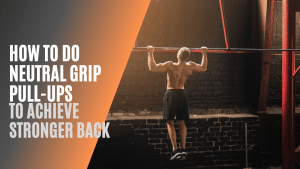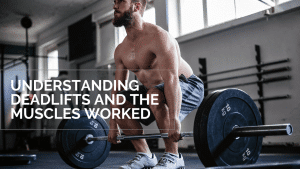How do you do back squats
and are they better than front squats?
The back squat is not called the king of exercises for nothing. And no, it is not just all hype because the exercise lives up to its moniker and more. This full-body exercise is not just going to train you like a beast; it will also make you discover the untapped strength you never knew you had.
But more than building strength, the back squat also builds power and size. So if you are looking for a total body workout, look no further because this exercise has got your back and more—quite literally.
What is a back squat?
The back squat is a lower-body exercise that works the glutes, hamstrings, and quads. But while the movement is mainly powered by the lower body, effectively performing this exercise will also require the participation of the core, lower back, and even the arms.
Although the back squat is an effective exercise to improve strength, power, and size, it can also be dangerous when done incorrectly. Many people want to do the back squat because of its many benefits, but many people also mess up their form and consequently but not surprisingly, the exercise itself.
How to back squat the right way
To prevent yourself from being one of those who butcher the back squat, follow this step-by-step guide on how to do back squats the right way.
- Begin by making sure that the bar is at a height that allows you to position yourself under it and lift it without you rising to the ball of your feet. You might need to do some trial-and-error first by doing a few repetitions with an unloaded bar until you find the position you are most comfortable with.
- Place the bar evenly on your back. To ensure this, stand in front of the bar and put your hands where they are comfortable. The ideal position should be close to your shoulders because it feels more natural and not overly cramped.
- Grab the bar with a firm pronated grip then put yourself under it. Once your shoulders are in contact with the bar, tighten your lats and let the bar dig through your back instead of simply letting it sit there.
- Lift the bar off the rack and take a few steps back to set you up for the exercise. Once you are in position, plant your feet firmly on the ground with your legs shoulder-width apart. Make sure you are far enough from the rack to avoid hitting the clips as you squat.
- Lower your hips and knees into a squat while maintaining a tight core and a neutral back. Make sure your knees open and go directly over your toes as you keep squatting until your thighs are parallel to the ground.
- Once you reach the bottom position, push back up using your midfoot and straighten your hips and knees to go back to the starting position.
The muscles at work
Quads
As one of the primary movers, the quads’ main responsibility is to extend the knee joints. During a back squat, the quads are isolated as the demand for a higher degree of knee flexion increases. This means that the quads are working their hardest as you stand up from the bottom position of the exercise, but they work even harder when the weight is heavier.
Glutes
Another primary mover in a back squat is the gluteus maximus. This muscle is vital for the squat lockout because it is responsible for extending the hips. As you lower your hips into a squat, your hips travel behind the line of force. But as you stand back up, the hips also need to go up and forward to return to the line of force. This means that the deeper you squat, the more your gluteal muscles are put to work.
Hamstrings
As you go deeper during the squat, the hamstrings assist the gluteal muscles by controlling flexion at the hips. As you stand back up, the hamstrings contract and work against resistance to extend the hips.
Stabilizing muscles
During the squat, the lower back, calves, and core muscles are engaged to be the main stabilizers. The spinal erectors in your lower back help maintain an upright torso during the exercise; the calves act as some sort of base for the hips and knees to push from; lastly, the core supports your lower back.
The benefits of the back squat
Stronger legs
The back squat builds serious leg strength since it engages almost all your leg muscles and enables you to load the body with more weight compared to other leg exercises. Besides, toned legs are more visually appealing. While sculpted legs do not necessarily mean more strength all the time, it does mean that you have the capacity for more strength.
Increased power
Power is not gained by ignoring the largest part of the body. Not only do back squats increase your ability to jump, but they also increase your ability to produce power in multiple scenarios. Leg extension, flexion, and hip extension are all key players when performing activities such as sprinting, moving weight, and basically any other movement in your daily life.
Better movement
Your joints need to engage in a specific pattern regularly to get strong. With back squats, your ankles, knees, and hip joints get better acquainted with the movement which will be beneficial in the long run since weak joints make you prone to injuries as you age.
Back squat no-no’s you need to avoid
Not being conscious about your torso
Not tightening your upper back and core muscles will take away the tension needed to effectively perform the exercise. This will result in your inability to lift heavier weights and improper form that may cause serious injury.
Knees collapsing inward
Also known as the valgus collapse, this serious back squat mistake puts a great deal of unnecessary pressure on your knees which can lead to injury. To avoid this, you may want to try wrapping a resistance band just above your knees to reinforce the proper position.
Coming up on your toes
Another common mistake many people make is when they use the ball of their feet to come up as they squat. This usually happens when the knees are brought far too forward instead of the hips being hinged to reach the bottom position. Refrain from doing such movement because it puts the knees in an unsafe position to handle too much weight. In simple terms, just keep your feet flat on the ground.
Back squat vs. front squat: which one is better?
There is no categorical yes-or-no answer to which one is better because that will depend on your abilities and goals.
Both squat variations have their benefits, but the front squat requires more mobility than the back squat so the latter may be the better option for beginners.
If your goal is strength and power, do back squats. If your goal is shredded quads, do front squats.
Moreover, back squats target the posterior chain which includes the lower back, gluteal muscles, and hamstrings while engaging the quads and core. Front squats, on the other hand, focus more on the anterior chain which includes the quads and upper body while engaging the glutes and hamstrings.
Both squat variations build strength in your quads, glutes, and hamstrings which, in turn, improve speed and power. But front squats are easier on the lower back because the position of the weight does not squeeze the spine like it would during back squats.
However, this benefit comes with a catch. Since front squats position the weight in front of the body, you will not be able to lift as much as you would during back squats.
Which one should you include in your workout routine?
Both.
Before you can safely and efficiently perform a front squat, you first need to develop good mobility in both your upper and lower body. The back squat will help you achieve this and since it does not require too much mobility, it will be easier for you to start there to develop your form and strength first.
If you are finally comfortable with both squat variations, decide on your goals.
Back squats help add weight quicker which means building strength and power faster. While front squats also help in promoting both—albeit not as fast—they are ideal for building prominent quads. So if you want to achieve strength and power with aesthetic benefits, do both squat variations for a more well-rounded result.



